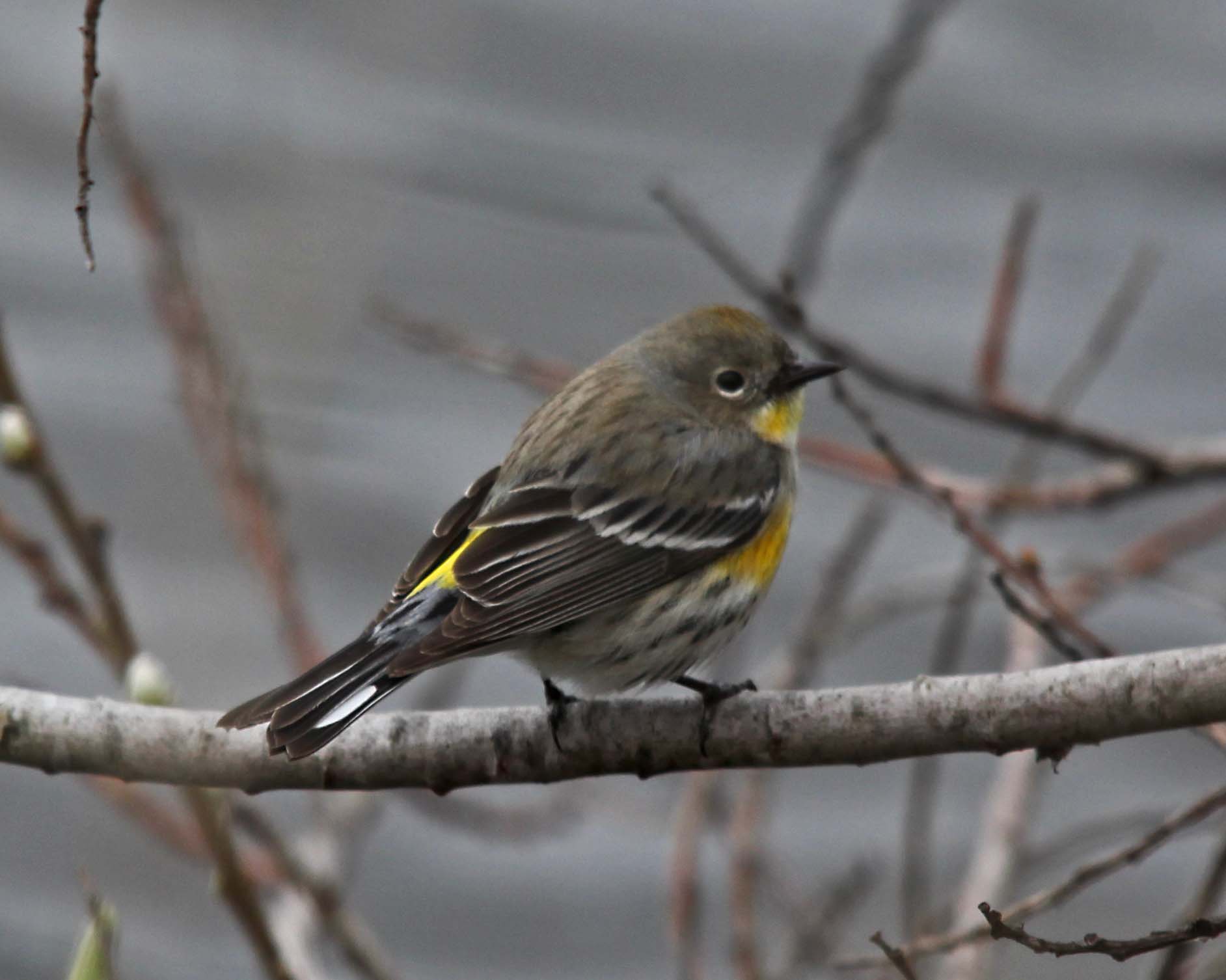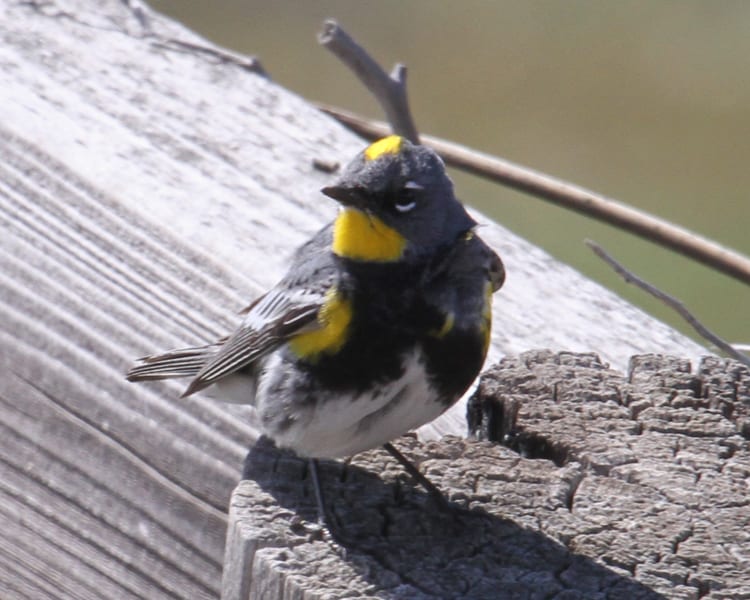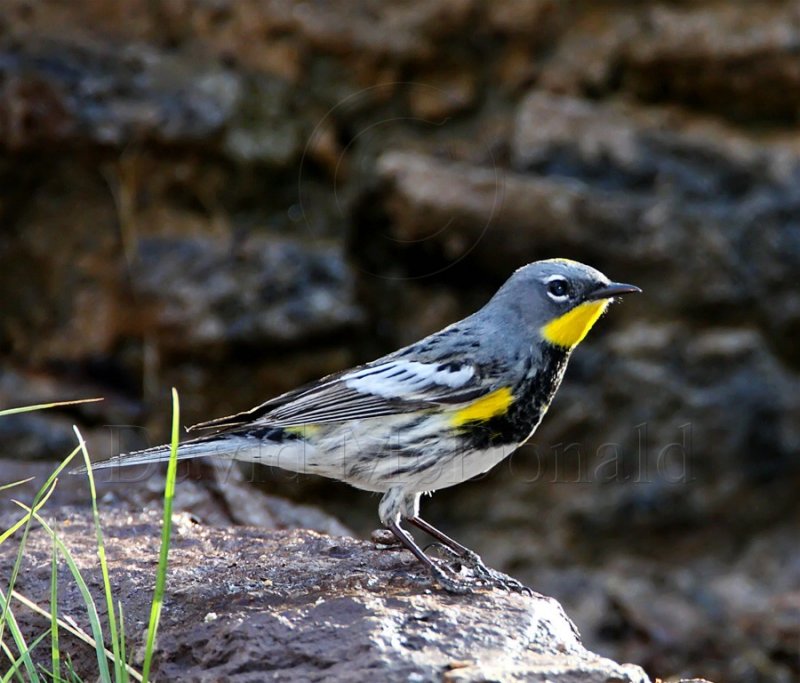

Fall adult: similar to spring adult, but generally browner above in both sexes with less black on breast. Spring female: similar to male, but brownish above with smaller tail spots. Yellow crown patch, distinct rump patch, and patches at sides of breast. Spring male: crown and back blue-gray streaked with black. Built in June on the fork of a horizontal conifer branch near the trunk at low to moderate height, the yellow-rumped Warbler’s nest contains 3 to 6 eggs. The yellow-rumped’s unique ability to digest the waxes in bayberries allows it to winter farther north than other warblers. Although variable, all yellow-rumped warblers possess a bright yellow rump, which is shared with only 2 other species. Please post all your sightings to: or to Please contact me if you find errors or omissions, or have questions or comments.These are probably the best known and most frequently encountered wood warblers. The monthly cumulative lists are archived on the SCVAS website at. My monthly reports are made up of eBird sightings, postings on south-bay-birds, and direct emails. Mute Swan, found on, at Los Gatos Creek County Park and Oka Ponds Scaly-breasted Munia, seen on, by multiple observers at 3 separate locations The 2 ABA non-countable birds for January were: Ruff, at Salt Pond A13, found by Dessi Sieburth Lesser Black-backed Gull,, at Salt Pond A16, found by Adam Panto Yellow-bellied Sapsucker,, found by Adam Burnett at Frenchman’s Park Townsend’s Solitaire,, found by Marcel Holyoak at the Sunnyvale Mountain Trailhead in Sanborn County Park Red-naped Sapsucker,, found by Alex Dunn at Ulistac Natural Area Red Phalarope,, seen by multiple observers Black Rail, hidden date, location, and observer - ‘sensitive species’ Summer Tanager,, seen by Garrett Lau, at Penitencia Creek TrailĢ. Tennessee Warbler,, found at Chris Hotts Park, by Tristan Yoo Tropical Kingbird,, at Lake Cunningham Park, by Michelle Thurber Sage Thrasher,, at Salt Pond A1, by “Anonymous” Painted Redstart,, continuing from 2022, at Agnews Historic Park, seen by multiple observers

#Yellow rumped warbler audubon code#
As a reminder, here is what each rarity code means:ġ = common, always seen in habitat in season.Ģ = fairly common, usually in habitat in season, but missed sometimes.ģ = uncommon, always around, but sometimes you can't find.Ĥ = rare, occurs yearly in the county, but not always in same places.ĥ = very rare, does not occur every year.Ħ = casual or vagrant, generally fewer than 10 records.Ĭurlew Sandpiper,, continuing from 2022, at Palo Alto Baylands, seen by Garrett Lau and Mike Danzenbaker Of the countable 209 birds that were recorded for January, there were 5 birds rated as rarity (6), and 8 birds rated as rarity (5). Thank you to everyone who birded, and took the time to report birds either on SBB, eBird, or send emails directly to me. There were 2 birds that were not ABA-countable in January (see below). The average for January 1st is 156, and the average for the month of January is 201. We started off 2023 with 166 countable birds seen on January 1, and a total of 212 countable birds for the month of January.

#Yellow rumped warbler audubon archive#
See the Santa Clara County Bird List Discussion Archive 2023 or view all the cumulative year lists. Please email additions, corrections, or comments to Brooke at post all your sightings to eBird. Monthly reports are made up of both eBird sightings and postings on South Bay Birds. Cumulative list compiled and discussions written by Brooke Miller.


 0 kommentar(er)
0 kommentar(er)
